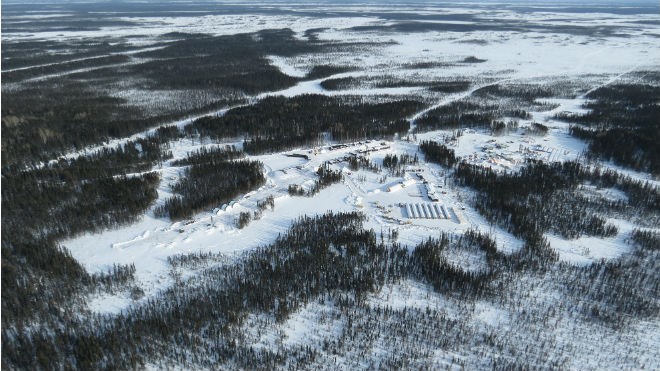It came as no surprise to the Mining Association of Canada that it's more expensive to mine in the Far North than in the south, but thanks to a new report, the association has quantified that difference.
“In the case of base metals, or gold mines, the difference is really significant,” said Pierre Gratton, president and CEO of the Mining Association of Canada.
In its report, called "Levelling the Playing Field," the association found the capital costs for base metal mines are, on average, 2.5 times higher in the Far North than in the south.
The capital costs for gold mines were around double in the North, and the capital costs for diamond mines were 15-per-cent to 20-per-cent higher.
The Mining Association of Canada defines the Far North as the territories, and northern and remote regions of the provinces, including the Ring of Fire deposit in northwestern Ontario.
Gratton said most mines in the North need to have very high grades, and to last for many years, to be viable investments.
But to meet growing demand for materials in emerging economies like China and India, Canada will need to step up to the plate, or the demand will be met by another country, Gratton said.
And the most potential for new mines in Canada, he said, lies in the Far North.
“We are seeing our industry go increasingly north,” Gratton said.
“Unless we change the current economic equation in the Far North, we're still going to go slowly, and only the highest quality and highest grade mines actually get built,” he added.
Part of that economic equation includes government investments in infrastructure, such as recent powerline extensions in British Columbia, and the Ontario government's promise to set aside $1 billion for a road to the Ring of Fire.
“We would have liked to have seen it built a while ago, but we understand the issues there,” Gratton said.
In its report, the Mining Association of Canada recommended a number of tax incentives it believes would spur more mine development in Canada's more remote regions.
“To support exploration, the group advocates for a new and enhanced federal Mineral Exploration Tax Credit (METC) for projects in remote and northern parts of Canada at 25 per cent versus the current 15 per cent, as well as financial incentives to make the costs of drilling for early-stage exploration projects more economically feasible,” the report said.
The association also called for a base 10-per-cent tax credit for companies that operate in remote northern areas, in addition to either a 15-per-cent investment tax credit for eligible infrastructure, or a pardonable 25-per-cent conditionally repayable contribution for infrastructure investments.
“Maybe there's a way in which the tax system can try and recognize some of those infrastructure components you don't see in the south,” Gratton said.
Join Sudbury.com+
- Messages
- Post a Listing
- Your Listings
- Your Profile
- Your Subscriptions
- Your Likes
- Your Business
- Support Local News
- Payment History
Sudbury.com+ members
Already a +member?
Not a +member?
Sign up for a Sudbury.com+ account for instant access to upcoming contests, local offers, auctions and so much more.
